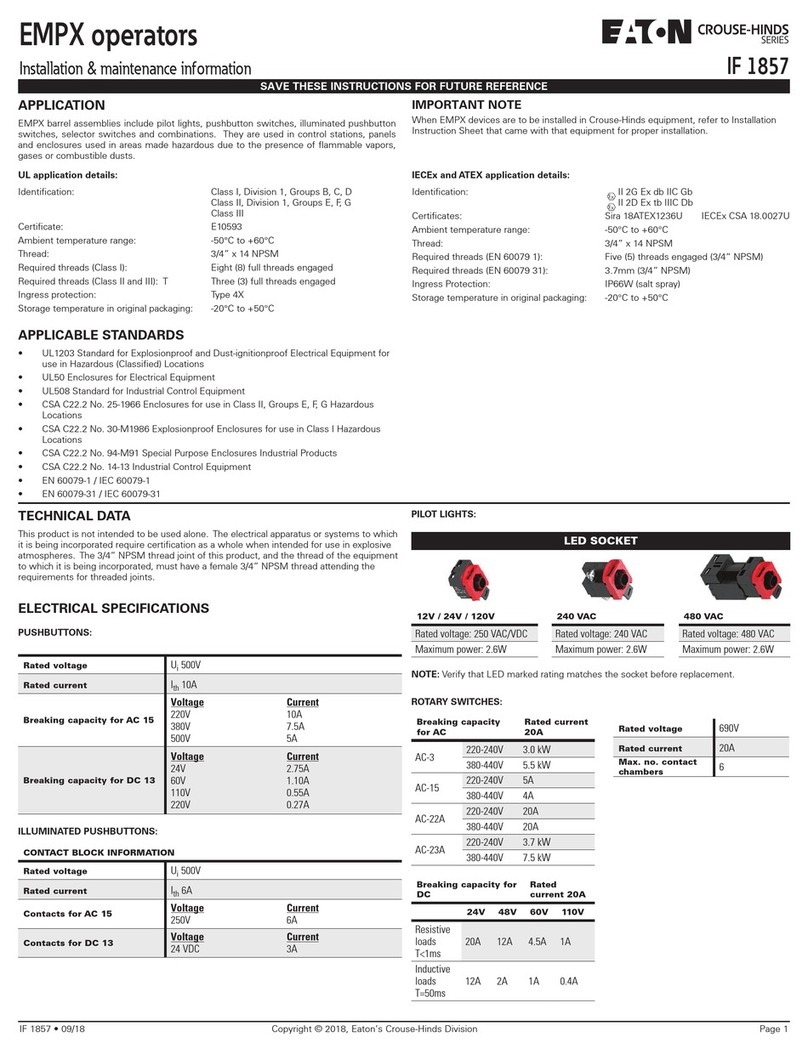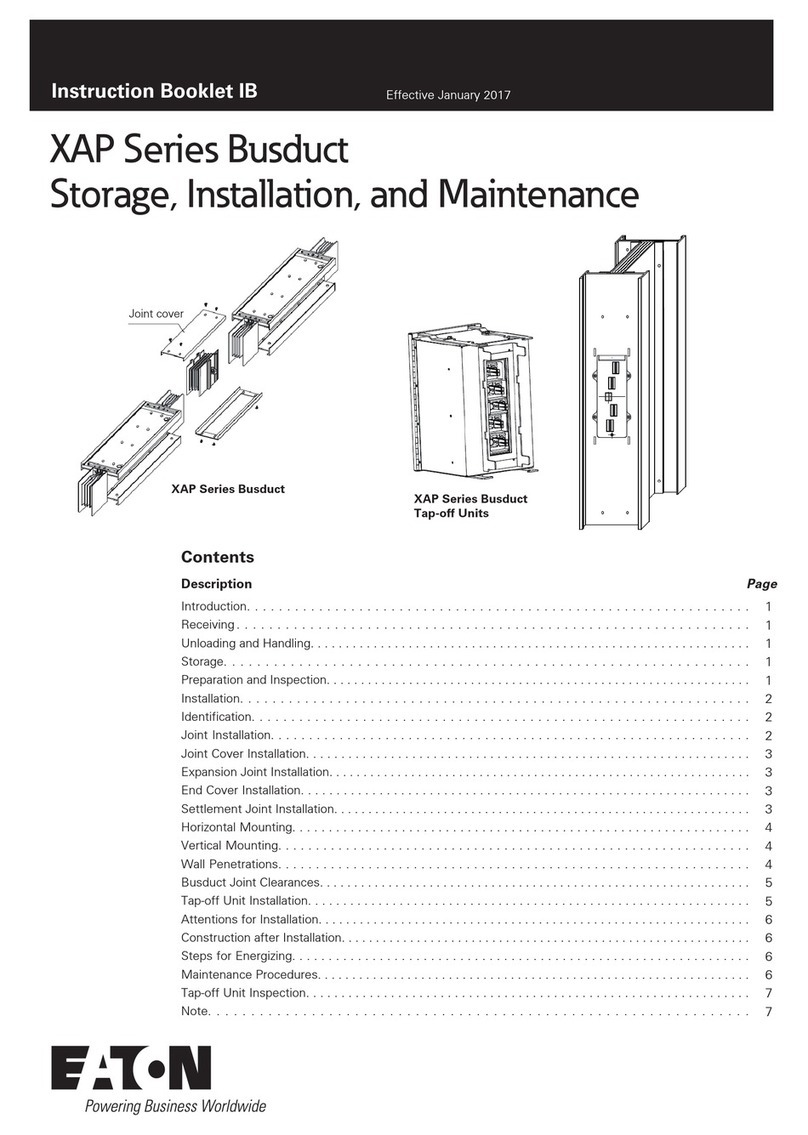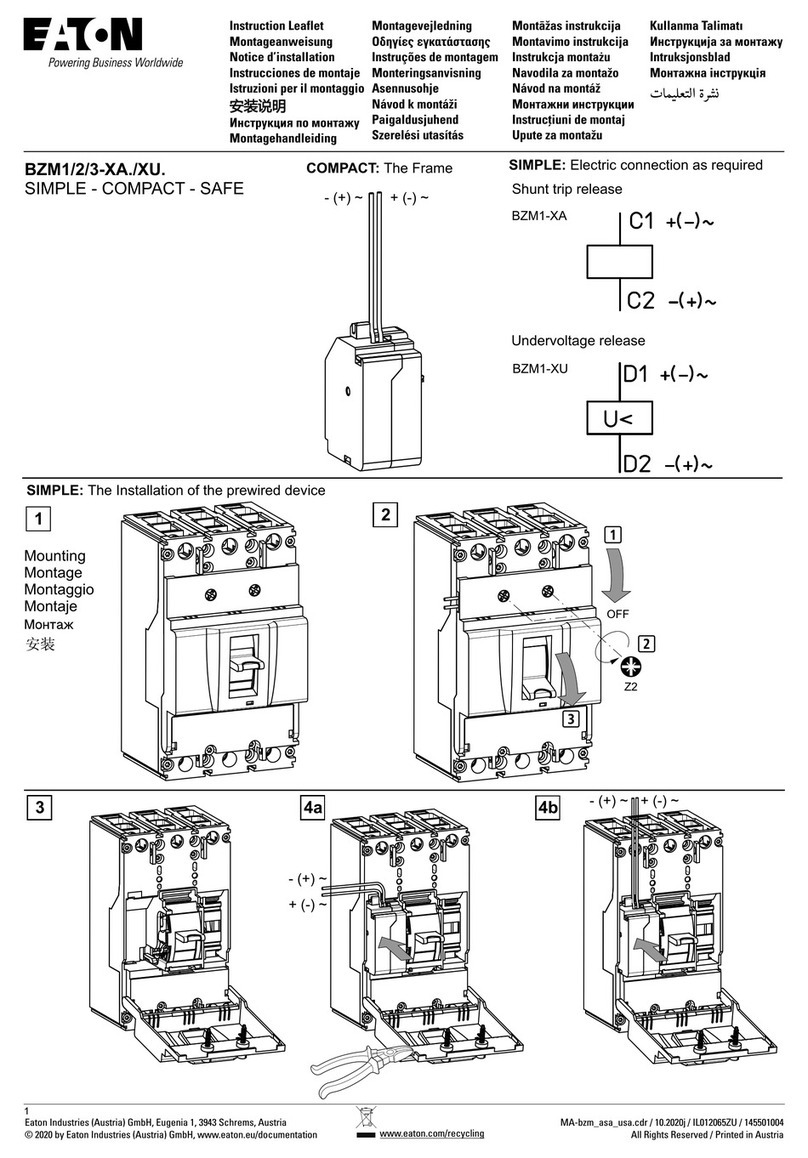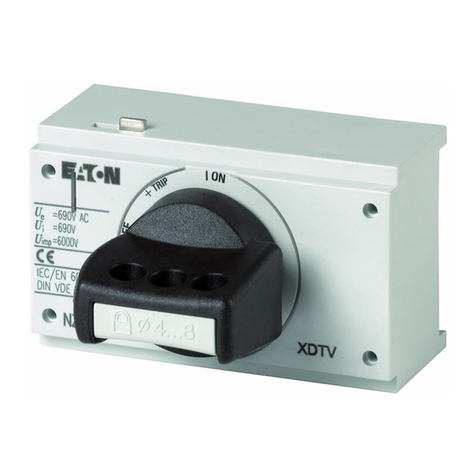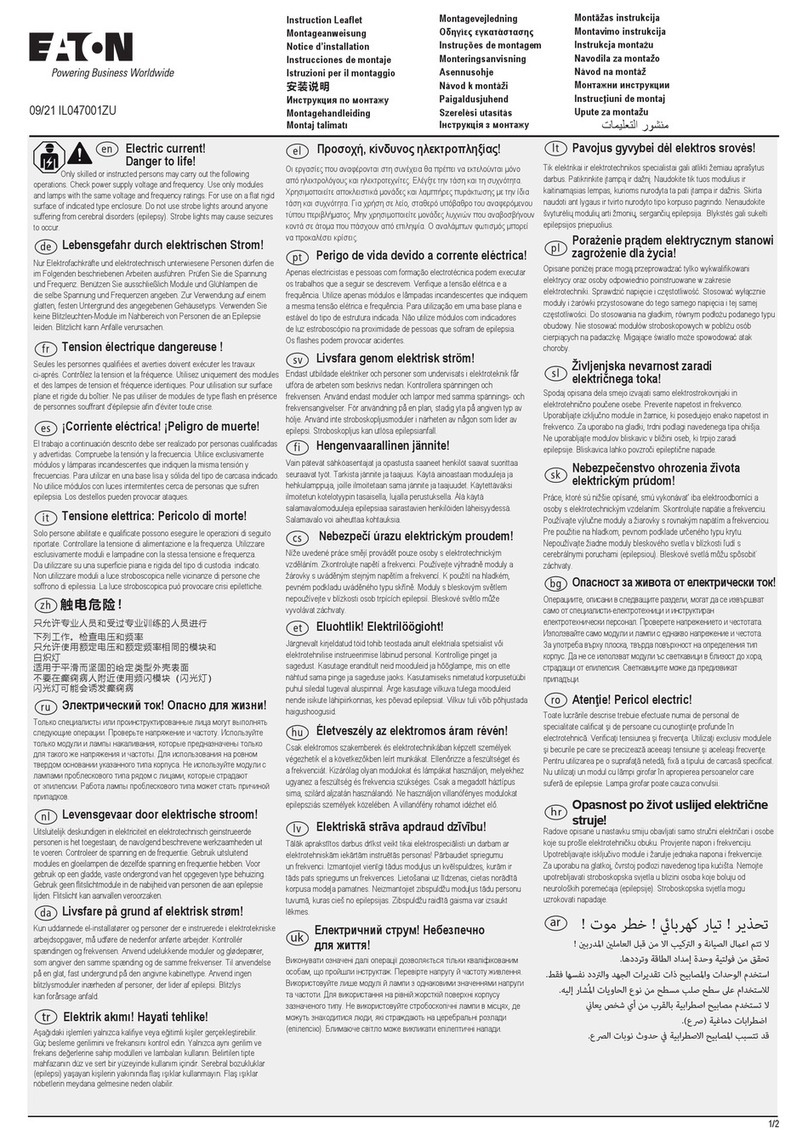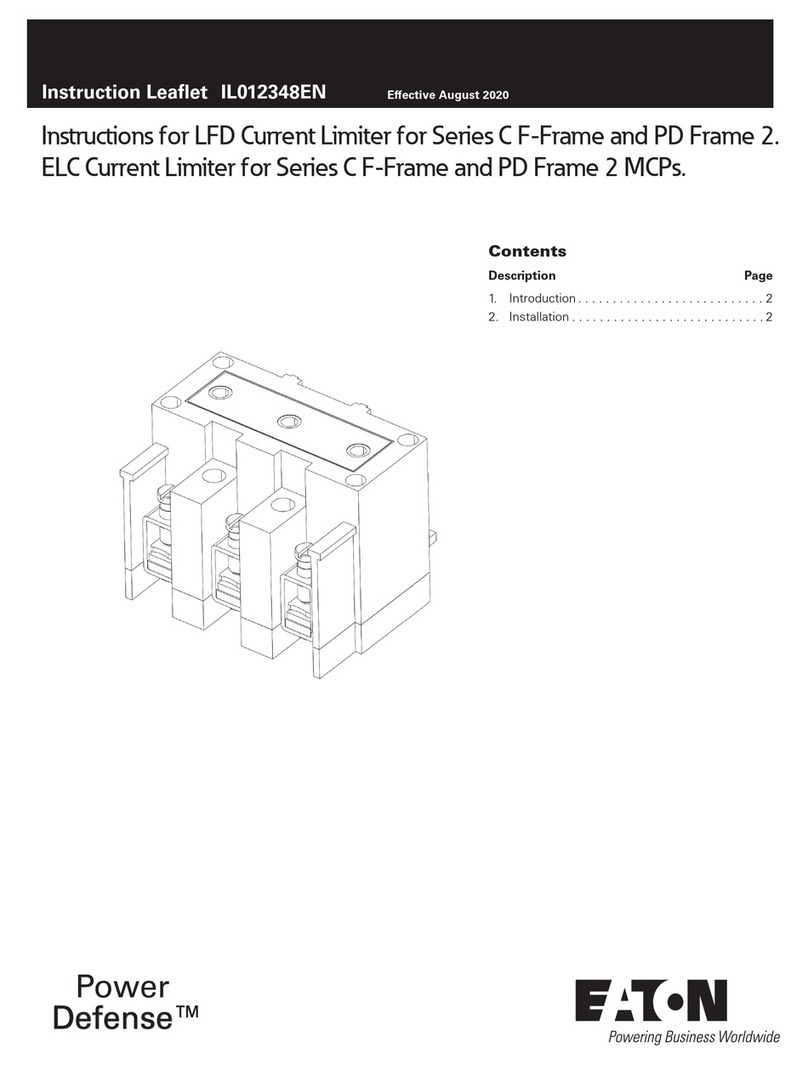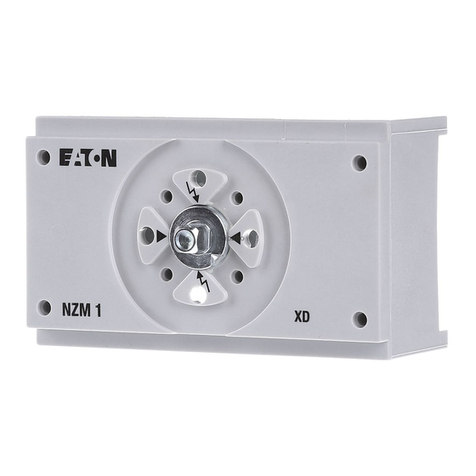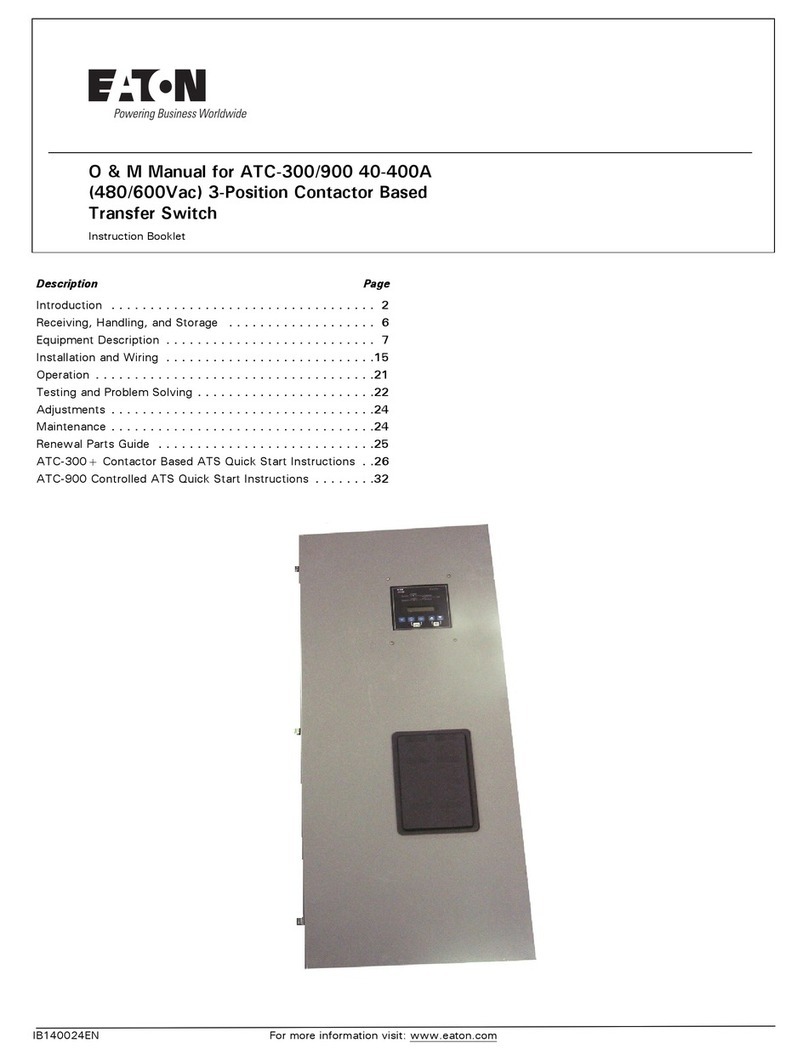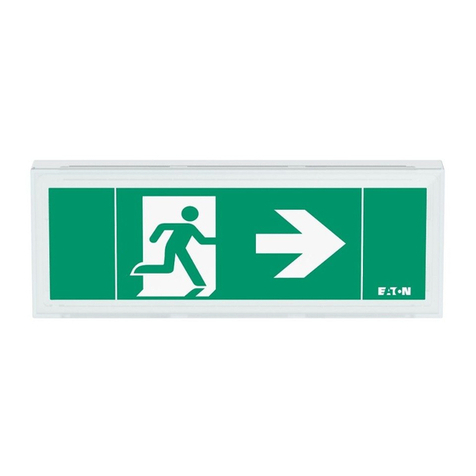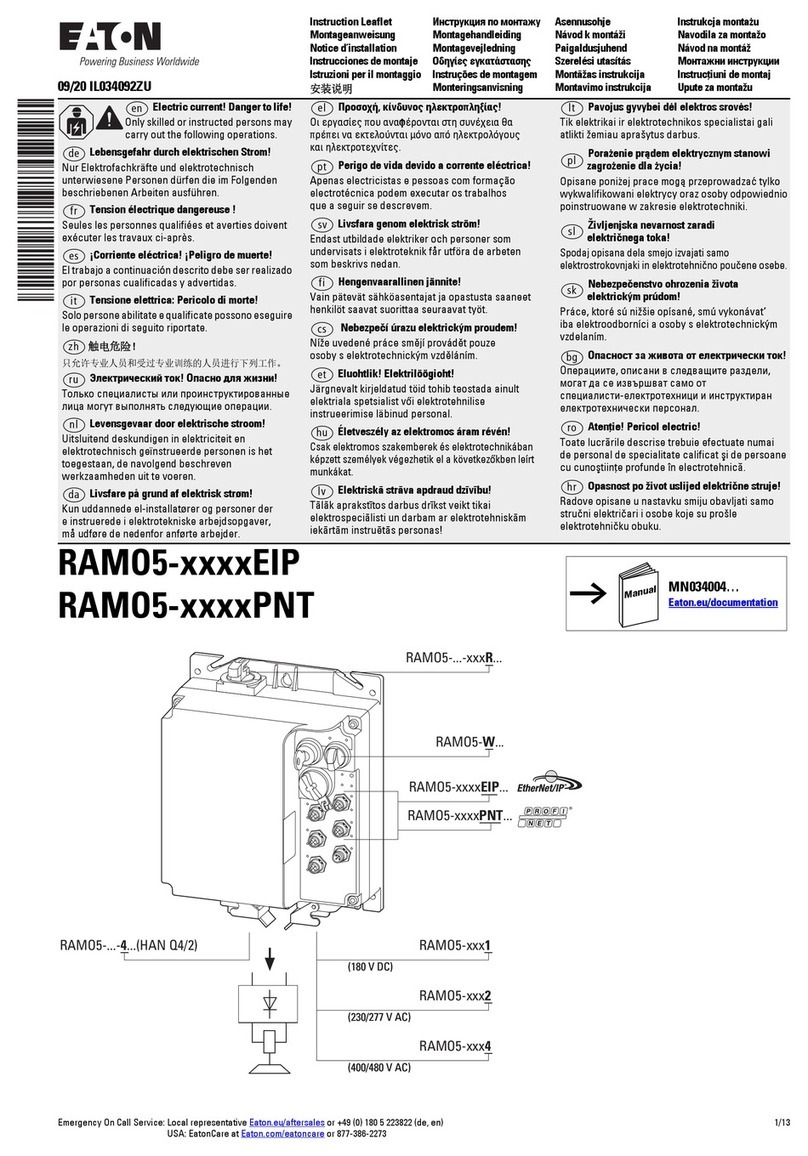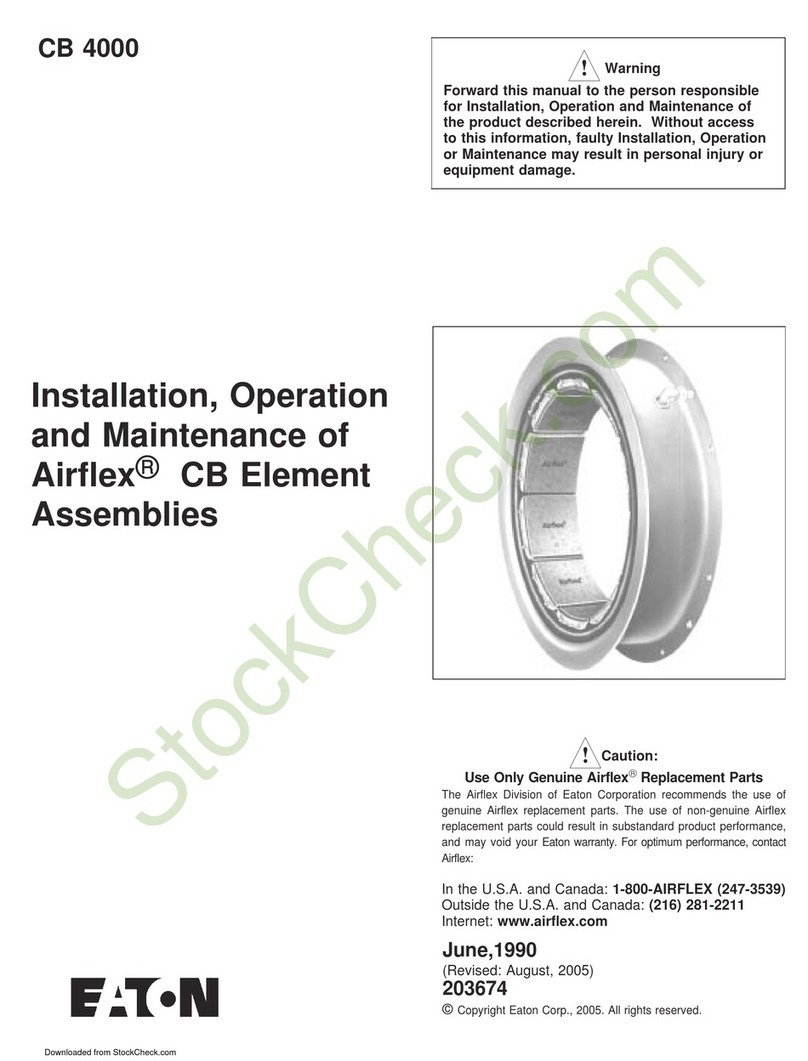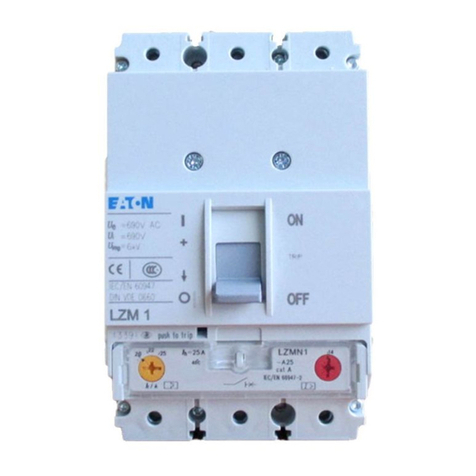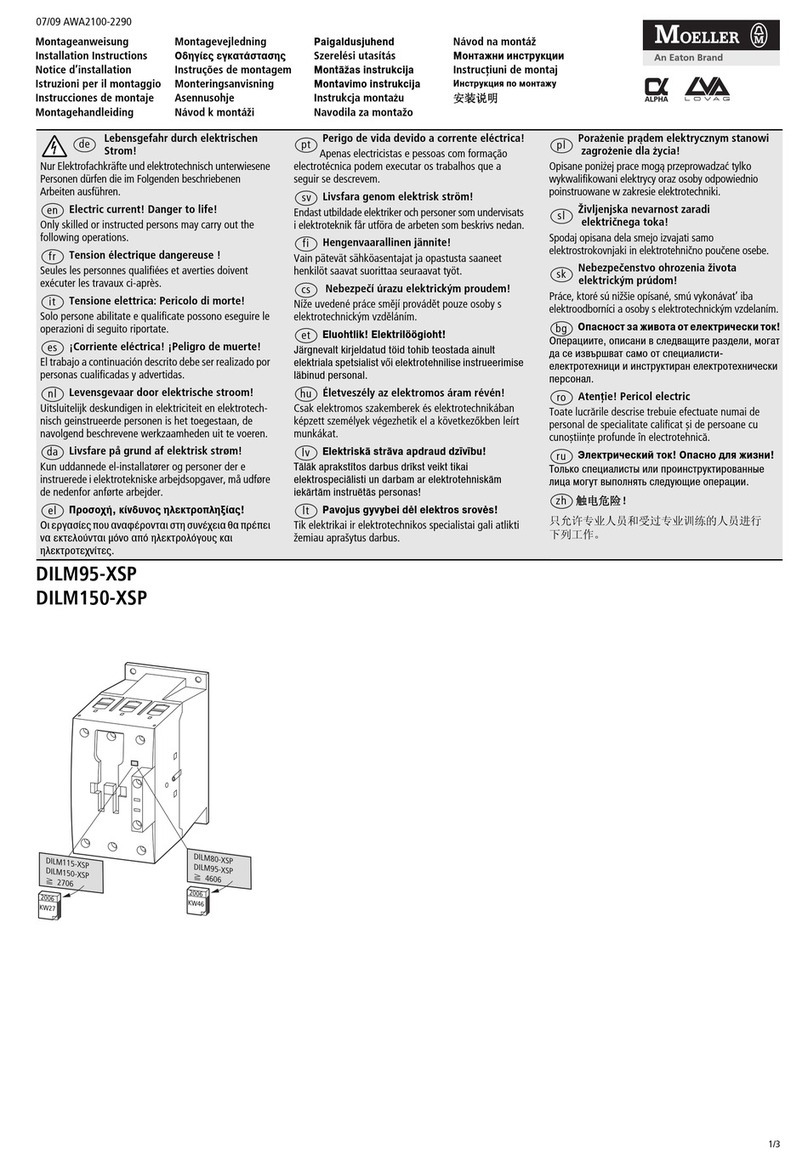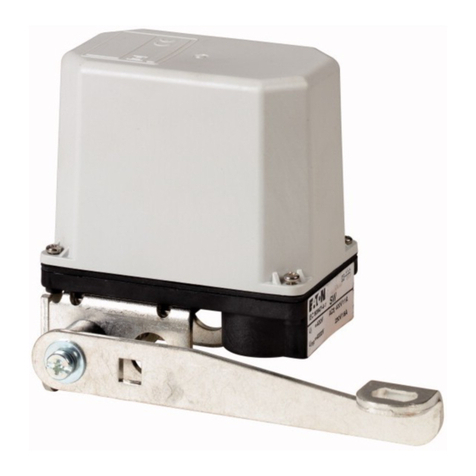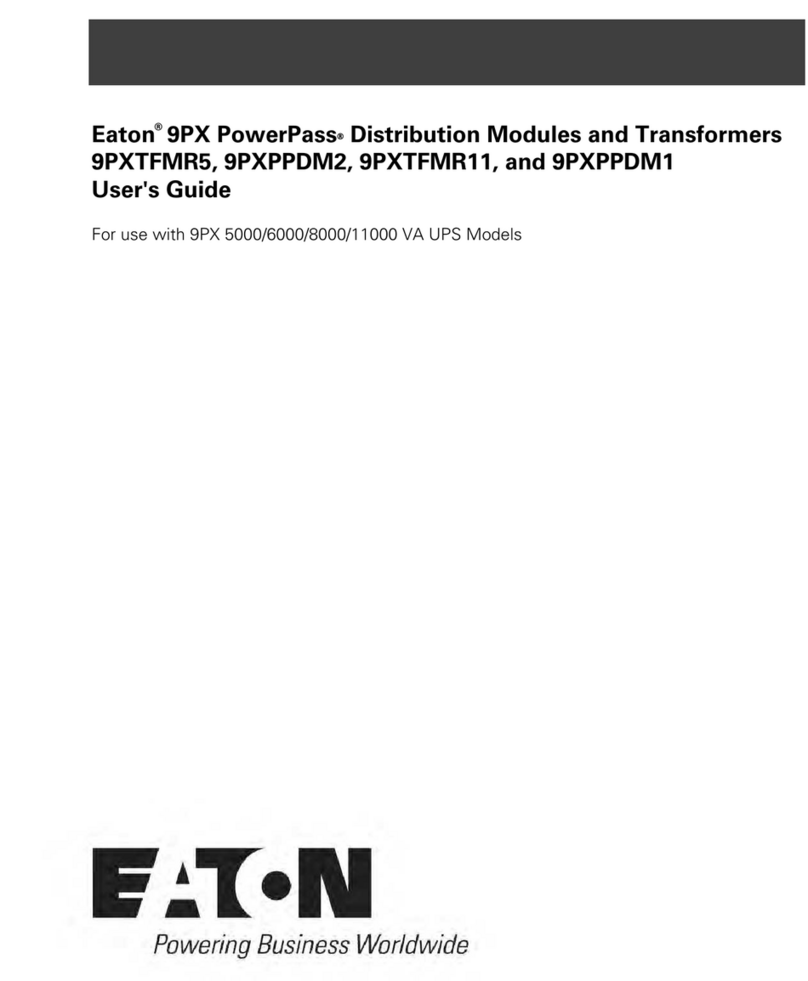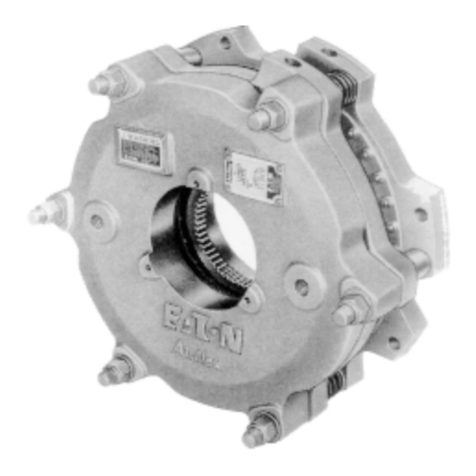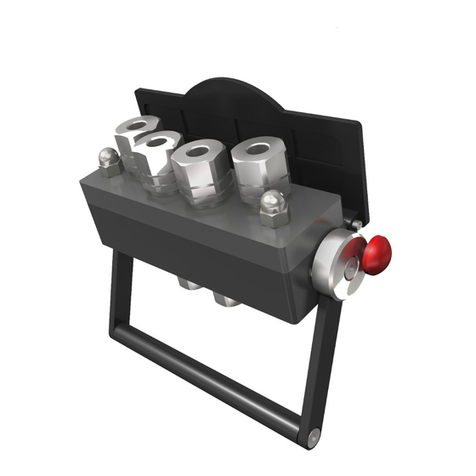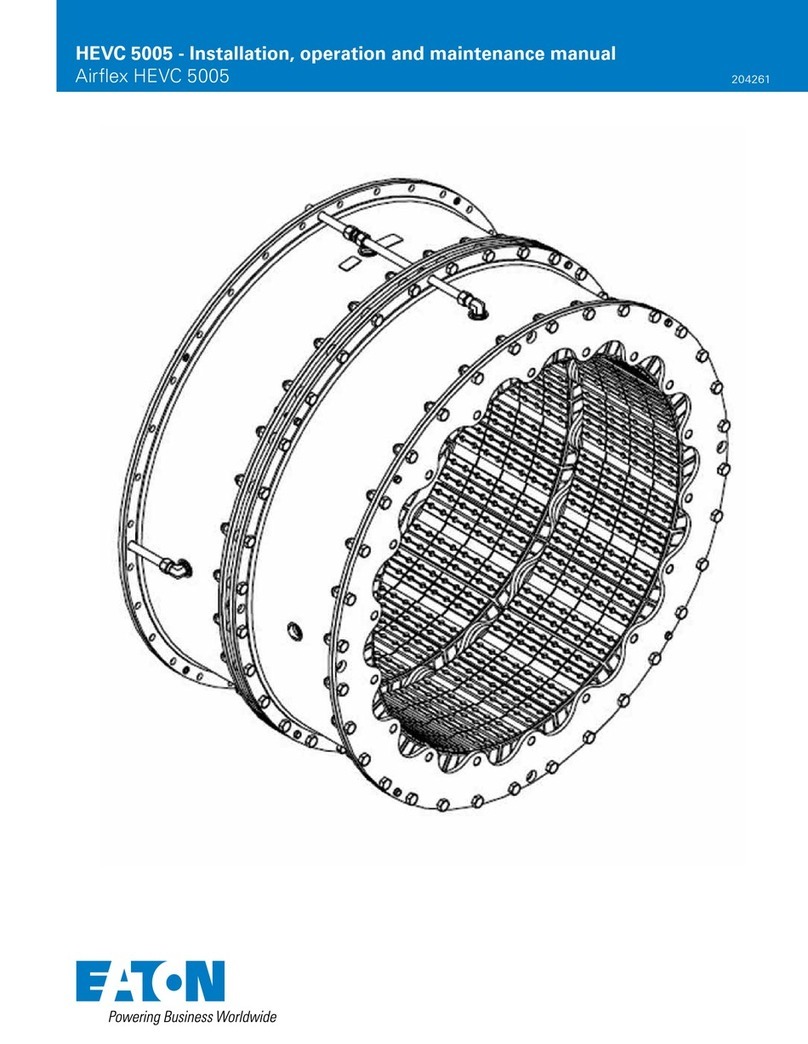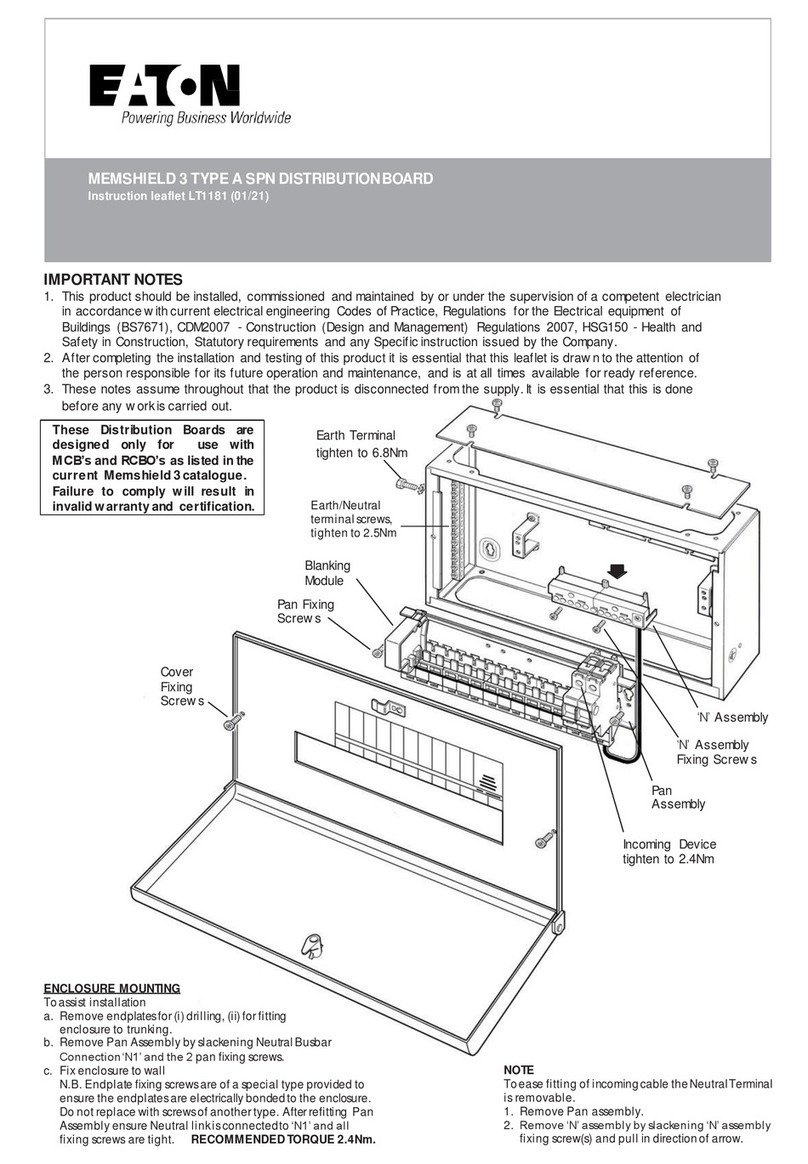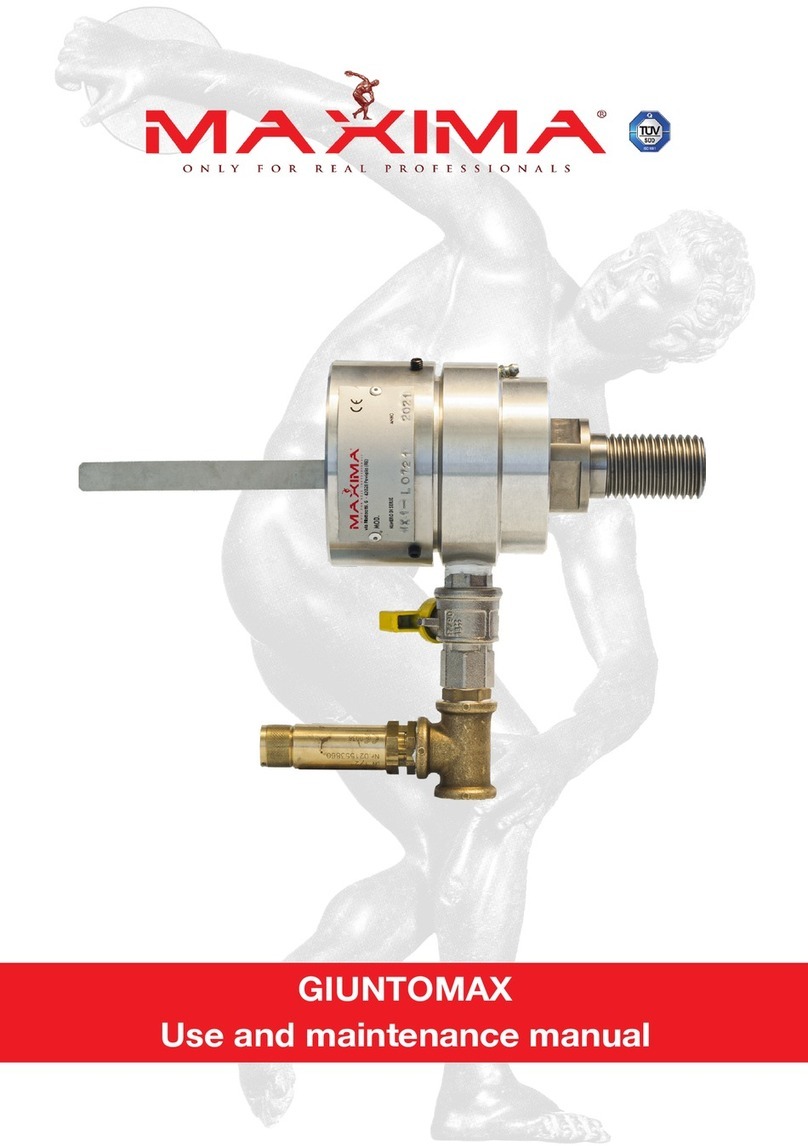
7EATON’s Crouse-Hinds Business
E
Bulkhead lighting fitting for hazardous areas for zone 2 / 22
Serie: AB 05 Ex-nR
Insert the connection cable through the cable
entry. With sealing inserts that can be trimmed,
ensure that the insert is correctly adapted to
the diameter of the cable.
Excessive tightening may impare the protection
category.
The cable entries are to be securely tightened
to ensure the necessary minimum protection
rating. If they are tightened excessively, the
protection rating may be compromised.
The cables must correspond with the minimum
temperature resistance depending on the lamp
in fig. 3 table 1 and application.
Silicone tubes are stuck to the light fitting
socket with adhesive tape.
– Remove adhesive tape from the ceramic
lamp socket. Push the silicone tubes over the
connecting wires.
Connect cable according to the terminal
numbering and circuit diagram.
The conductors shall be connected with special
care in order to maintain the explosion category.
The insulation of the conductors shall reach the
terminal. The conductor itself shall not be
damaged. The connectible min. and max.
conductor cross-sections shall be observed
(see technical data).
If multi- or fine-wire connecting cables are
used, the wire ends will have to be handled in
acc. with the applicable national and internatio-
nal rules (e.g. use of sleeves for strands).
All screws and/or nuts of the supply terminals,
also of those remaining vacant, shall be
tightened down.
5.5 Lamps
a Only lamps that are approved for this
type of lamp may be used (see Fig.3 table 1,
type label of the light fitting and label on the
lamp holder).
5.5.1 Inserting the lamp
a The lamp must be screwed tightly into the
lamp holder. Ensure it is screwed in fully so
that no sparks or other unauthorised operating
states may occur. Protect the glass on the lamp
from breaking when screwing in.
5.6 Closing the light fitting
Remove all foreign matirals from the light
fitting.
– Pay attention to the correct fit of the
enclosure top part and the seals.
– All seals must be clean an undamaged.
– The light fitting may not be damaged.
– Tighten all 6 enclosure cobi.screws evenly
diagonally (test torque see tech. data).
a Overtightening might impair the
protection category!
The three fastening straps are designed for
screws with a diameter of 8 mm and the
corresponding washers.
The enclosure may only lie flat on and be
fixed torsion-free to the fastening points
provided for direct assembly.
Mind! Overtightening might damage the
light fitting!
5.3 Cable entries (KLE);
blanking plugs
a The cables, cable entries and blanking
plugs must correspond with the minimum
temperature resistance depending on the
lamp in fig. 3 table 1.
Unused holes shall be closed with a certified
blanking plug in order to establish the minimum
protection category.
The operating instruction for the cable glands
used must be observed.
Overtightening might impair the protection
category.
Attention: It must be ensured that during
thigtening of the cap nut, not the complete
cable entry starts turning.
5.3.1 „nR“ Restricted breathing (Zone 2)
The „Restricted breathing (nR)" properties must
be preserved when, for example, using cables
and wires of sufficient diameter.
(see also IEC/EN 60079-14).
If the cable glands included in the scope of
delivery are replaced with other cable glands,
the "nR" properties must be checked before
putting into operation.
A restricted breathing test may be carried out
as per section 9.
5.3.2 „t“ Dust (Zone 22)
If the cable glands included in the scope of
delivery are replaced with other cable glands,
the cable glands and blanking plugs must be
used in compliance with IEC/EN 60079-31.
5.4 Opening and closing the light fitting/
Electrical connection
5.4.1 General
a The electrical connection of the lamp
must only be established by qualified
electricians. (IEC/EN 60079-14)
5.4.2 Opening the light fitting
Unscrew the six housing-combi-screws.
The protective film on the metal reflector
have to removed.
5.4.3 Electrical connection
Insert the connection cable through the cable
entry. With sealing inserts that can be trimmed,
ensure that the insert is correctly adapted to
the diameter of the cable.
6 Putting into operating
Prior to putting the apparatus into operation,
the tests specified in the relevant national
regulations shall be carried out.
Check the light fitting for its proper functioning
and installation in compliance with these
operating instructions and other applicable
regulations!
Attention: Only fully certified equipment
may be put into operation.
Improper installation and operation of the
lamp leads to loss of the guarantee.
– The light fitting may only be operated when
closed.
– It is generally recommended (see
IEC/EN 60079-14) that you ensure the
restricted breathing of the construction is not
impaired during installation and that you test
the restricted breathing properties before
commissioning (see section 9).
7 Maintenance / Servicing
a Warning:
Disconnect the power supply to the
equipment before maintenance / repair.
a Before the light fitting is opened it must
be allowed to cool down for 10 minutes after
switching off.
a All seals have to be re-attach after
maintenance.
Observe the valid regulations for the repair,
maintenance and testing of explosion-protected
equipment, e.g. IEC/EN 60079-17!
7.1 General Maintenance / Inspection
The interval between maintenance depends
upon the ambient conditions and the hours of
operation. The recommendations given within
IEC/EN 60079-17 for recurring checks must be
observed.
Within the scope of the maintenance /
inspection, especially those parts on which the
type of protection depends must be checked
for damage, e.g.:
– Silicone tubes over the connecting cables.
– cable entries must be free from corrosion!
– Observe the intervals for changing as
specified by the lamp manufacturer!
– Lamp types must be as specified!
If the light fittings is opened for maintenance
purposes or to replace the lamp, ensure
that the "nR" properties are not affected.
This could be done by testing the restricted
breathing properties as per section 9, for
example.
